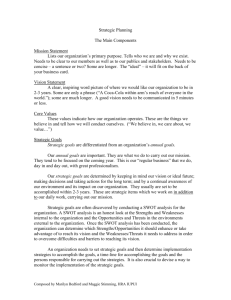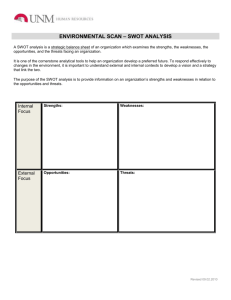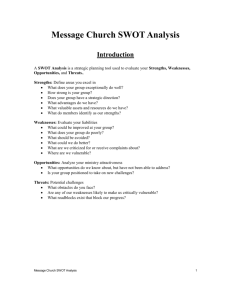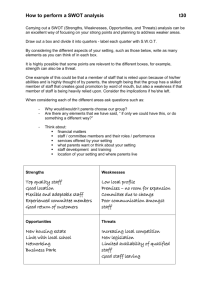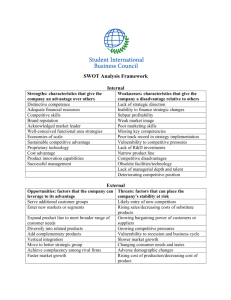184589_830887208_Power_Point_Week_14
advertisement
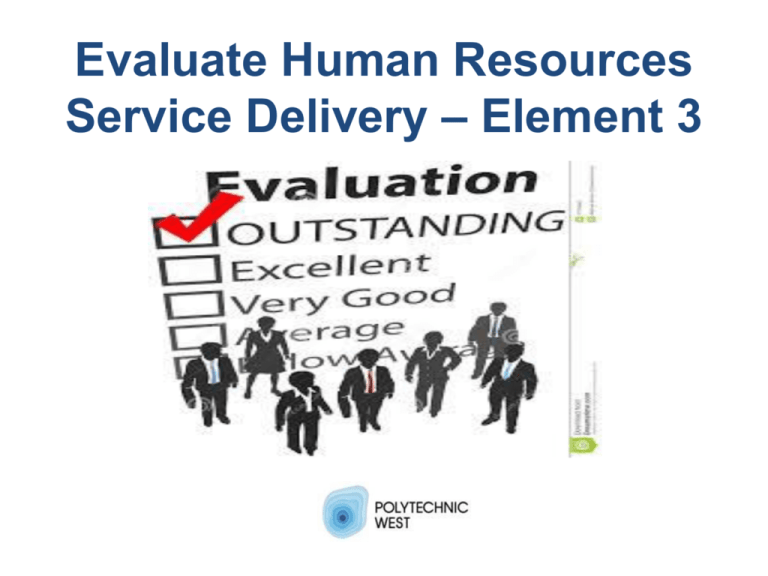
Evaluate Human Resources Service Delivery – Element 3 How do you know what you have done has been done well? Your most unhappy customers are your greatest source of learning. – Bill Gates Feedback from who? • Internal Customers – someone who helps the organization serve the end customer. For example, employees, other departments, suppliers, safety officers, marketing • External Customers – people that come from outside the business who use or is directly affected by a company’s products or services. How to get the feedback? • Written surveys (feedback forms). • On-line surveys. • Mobile devices. • Telephone. • Chat rooms. What feedback is ABC Services looking for? • Overall employee satisfaction. • Training quality • Assessment •Training conditions •Learner engagement •Work readiness •Changes to improve training Develop a survey – Student Activity • Either using survey monkey or electronically performed develop a survey for ABC employees to complete. • Your aim is to determine the quality, success and effectiveness of the training conducted by partnering training organisation. • Surveys will be peer reviewed. • https://www.surveymonkey.com/home/ SWOT ANALYSIS • Strengths and Weaknesses – internal environment (factors tend to be in the present) • Opportunities and Threats – external environment (factors tend to be in the future) Strategic planning, brainstorming and decision making • You'll get more value from a SWOT analysis if you conduct it with a specific objective or question in mind. For example, deciding on how you should: – take advantage of a new business opportunity – respond to new trends – implement new technology – deal with changes to your competitors' operations Building on Strengths • A SWOT analysis will an organisation identify areas of the business that are performing well. These areas are your critical success factors and they give your business its competitive advantage. • Identifying these strengths also enables the organisation to grow and involves finding ways of using and building on these strengths. Minimise weaknesses • Weaknesses are the characteristics that put an organisation at a disadvantage to others. Conducting a SWOT analysis can help you identify these characteristics and minimise and manage them adequately Seizing opportunities • A SWOT analysis can help identify opportunities that the organisation could take advantage of to make greater profits. Opportunities are created by external factors, such as new consumer trends and changes in the market. Counteracting threats • Threats are external factors that could cause problems for an organisation, such as changes to the market, a competitor's new advertising campaign, or new government policy. A SWOT analysis can help identify threats and ways to counteract them, depending on your strengths and weaknesses Useful Websites • Mind tools - SWOT • http://www.mindtools.com/pages/article/ne wTMC_05.htm • Business Balls – SWOT templates • http://www.businessballs.com/swotanalysi sfreetemplate.htm • See ABC Service Agency for example SWOT Task 23 – Page 59 • Option 1 – Create a reward system for employees. (flexible schedules, bonus scheme) • Option 2 – Implementation of a new technology/computer system • Option 3 – Leadership program to develop supervisors. Task 25 – Page 64 • Option 1 – Create a reward system for employees. (flexible schedules, bonus scheme) • Option 2 – Implementation of a new technology/computer system • Option 3 – Leadership program to develop supervisors. Survey/Feedback Results (page 66) • Collate survey results • Integrate changes as part of the continuous improvement process • Make adjustments to the original HR plan Approval Process (page 68) • As with the process of developing new strategic plans or service agreements, any proposed changes must again be documented and approved • See page 68 to revise those steps Element 4 Manage integration of business ethics in human resources practices In pairs summarise in ‘3’ power point slides one of the below topics…..relevant workplace examples need to be provided Ethical behaviour Ethical dilemma Organisational values Code of conduct Standards of behaviour Ethical decision making process Confidentiality requirements Employees rights and responsibilities Unethical behaviour Ethical expectations With your partner complete the following tasks: Task 28/Page 72 – Corporate values Task 29/Page 75 – Standards of behaviour Task 30/Page 77 – Confidentiality and legislation Task 31/Page 78 – Addressing unethical behaviour
